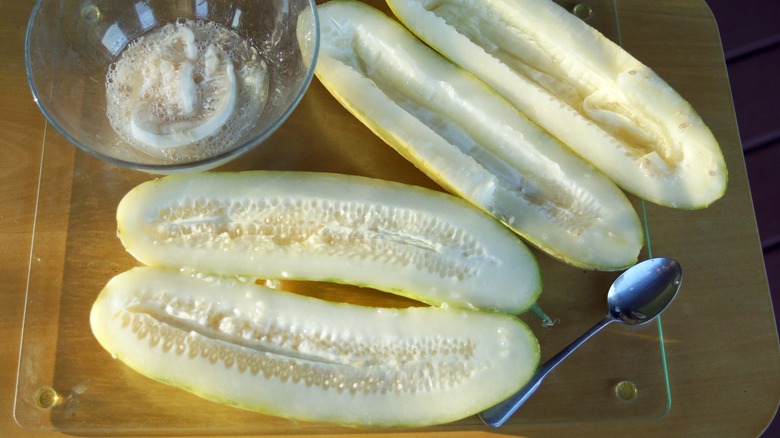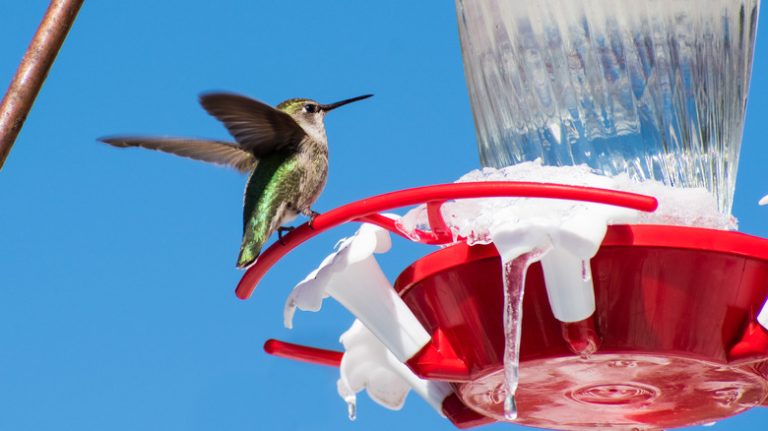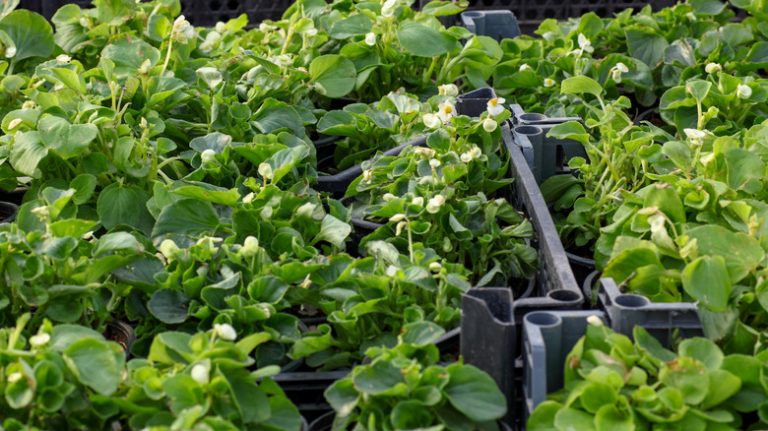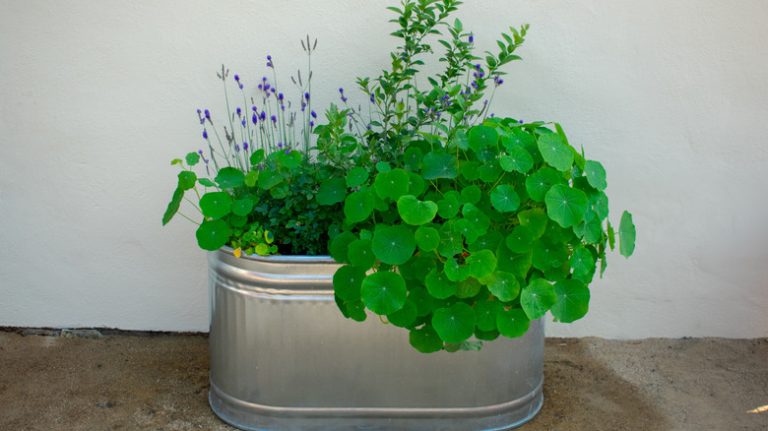Few things are more summery than a salad of cool, refreshing cucumber slices. The dish tastes even when you grow the crispiest cucumbers. As the sunny season draws to a close, some of those cucumbers, left forgotten on the vine, are enormous, bloated, and… your cucumber plant is turning yellow! Don’t let the unappetizing appearance of the fruit fool you. It’s full of viable seeds. Seed saving allows you to grow the same delicious variety again, save money (you don’t have to buy new seeds), preserve genetic diversity in your area, and share seeds with others.
The first sign a cucumber is perfect for seed saving is a change in color from green to pale cream, yellow, or even orange. It will also be dramatically longer and fatter than its edible counterparts. According to the non-profit Seed Savers Exchange, this change takes place around six to eight weeks after pollination, but don’t be afraid to leave the fruit on the vine for up to two weeks or in a cool, dry spot in your house for a couple of days after it changes color to let the seeds fully mature. The peel of a ripe cucumber is soft but not rotten, and it should easily come off the vine when tugged. Select fruit that’s evenly formed with unblemished skin and no sign of disease (seeds can harbor viruses, bacteria, and fungi) from a healthy plant that’s a good producer.
Ferment the seeds
You’ve got your ripe cucumbers, but how do you save their seeds? The progeny of some vegetables and fruit — like tomatoes, passionfruit, and, of course, cucumbers — is covered in a gel-like substance that researchers suspect delays germination. This needs to be removed before you can dry and store your cucumber seeds. One of the most common ways to do this is to ferment the seeds. Cut your cucumber in half lengthways and scoop the seeds into a bowl or glass jar using a metal spoon. Submerge the seeds in distilled water and cover the container with a small piece of clean, breathable cloth or cling film with a few holes punched in it secured with a rubber band.
Set the seeds aside in a warm place in your home, out of direct sunlight. Let the mixture ferment for somewhere between one and four days, depending on the season. Stir or swirl the container occasionally during that time. The fermenting process achieves two things. One, it separates the viable cucumber seeds from the non-viable ones; non-viable seeds float to the top of the water, and viable ones sink to the bottom. Two, it removes the gel-like coating from the seed that prevents the seed from drying out.
Drying and seed storage

To dry your cucumber seeds, scoop out any floating seeds and debris. Tip the remaining seeds into a sieve and run cold, fresh water through it. This will remove any remnants of the gel coating. Line a bowl with a coffee filter or a small, non-stick baking sheet with paper towels and spread the seeds out in a single layer to dry. They’re dry when you can easily snap a seed in half.
Transfer seeds to a jar, cotton bag, or envelope labeled with the variety name and the date. Store them in a cool (below 60 degrees Fahrenheit, ideally), dark, dry cupboard, or in the fridge. Moisture, heat, and sunlight are enemies of seed saving; your seeds can rot or germinate with exposure to these conditions. Properly prepared and stored cucumber seeds will keep for five to ten years. Concerned about disease? Freeze the seeds for a few days before storage.
If you’re less than enthusiastic about fermenting your seeds, it’s possible to skip that step. Scoop the cucumber seeds into a sieve and run cold water through it, rubbing the seeds against the mesh to remove the coating. Dry as above. Or, if you’re a truly lazy gardener (no judgment!), you can opt for self-seeding. Leave a few ripe cucumbers on the vine — eventually, they’ll dry out or rot, and the seeds will fall to the ground. They’ll survive there until next season when the conditions are suitable for germination.



